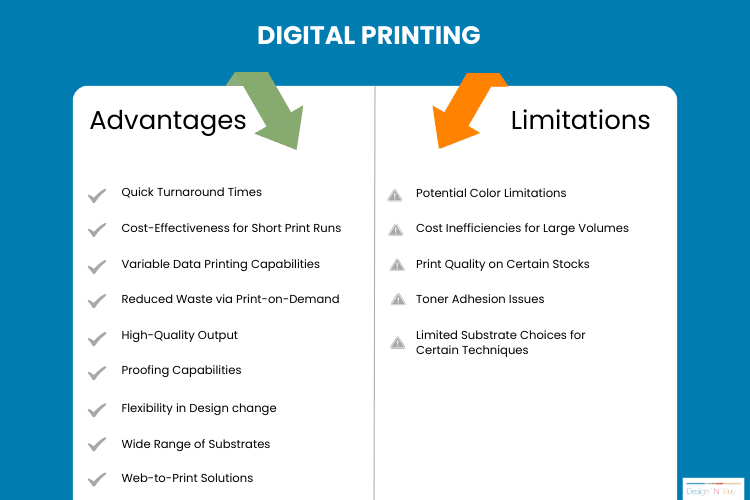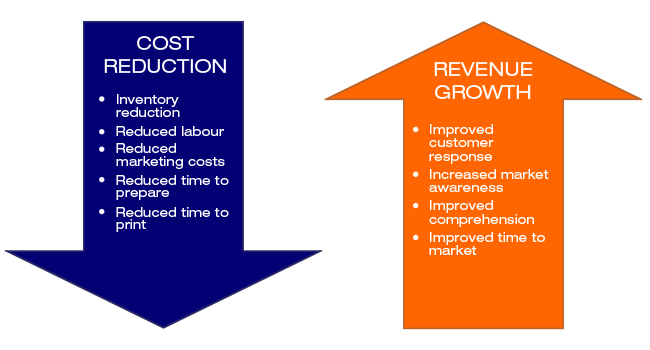The smart Trick of Digital Printing That Nobody is Talking About
The smart Trick of Digital Printing That Nobody is Talking About
Blog Article
All About Digital Printing
Table of ContentsThe Only Guide to Digital PrintingThe Buzz on Digital PrintingWhat Does Digital Printing Mean?How Digital Printing can Save You Time, Stress, and Money.The smart Trick of Digital Printing That Nobody is Talking AboutSome Known Details About Digital Printing
Variable data printing, such as direct mail with customized codes and addresses, is ideally suited for digital printing. Digital quick printing only needs 4 actions of design, review, printing and binding to get whatever done. Digital quick printing has an unmatched advantage: print on demand.According to PMMI, digital printing allows brand names and manufacturers to react swiftly to client demands while improving the supply chain, reducing warehousing cost and waste, and taking pleasure in faster time to market. That all noises terrific, but how does this technology do all that? The significant differentiator of these technologies is that there are no set up charges and no plates with digital printing.
The Basic Principles Of Digital Printing
According to Wikipedia, the best distinction between electronic printing and conventional methods such as lithography, flexography, gravure, or letterpress - Digital Printing is that there is no demand to replace printing plates in electronic printing, whereas in these analog printing techniques the plates are consistently changed. This leads to quicker turnaround time and lowers price when utilizing digital printing.
Speedy production suggests getting your item to market much faster. It also implies it's easier and faster to make changes later, when you alter a recipe, add a SKU, or produce seasonal product packaging. Digital printing is very flexible, so it's simple to make adjustments to the package design swiftly. All of it returns to the plates.
With traditional printing techniques, short-run printing is just not possible. Due to the fact that a fantastic design can make or damage your product, digital printing consistently develops high-grade, clear and vivid graphics each time.
Digital printing is the process of printing digital-based images straight onto a selection of media substratums. There is no need for a printing plate, unlike with offset printing. Digital files such as PDFs or desktop computer posting data can be sent directly to the electronic printing machine to print on paper, picture paper, canvas, fabric, synthetics, cardstock and other substrates.
Get This Report about Digital Printing
According to PMMI, digital printing permits brands and makers to respond swiftly to consumer demands while enhancing the supply chain, reducing warehousing expense and waste, and enjoying faster time to market. That all noises wonderful, however just how does this technology do all that? The major differentiator of these modern technologies is that there are no set-up charges and no plates with electronic printing.
According to Wikipedia, the about his greatest distinction in between digital printing and standard methods such as lithography, flexography, gravure, or letterpress is that there is no need to change printing plates in digital printing, whereas in these analog printing techniques the plates are consistently changed. This leads to quicker turnaround time and reduces cost when making use of digital printing.

Get This Report about Digital Printing
With conventional printing techniques, short-run printing is just not feasible. Because a fantastic layout can make or damage your item, digital printing constantly creates high-quality, clear and colorful graphics each time.

According to PMMI, electronic printing enables brands and manufacturers to respond swiftly to customer needs while enhancing the supply chain, minimizing warehousing expense and waste, and taking pleasure in faster time to market. That all noises excellent, however exactly how does this innovation do all that? The major differentiator of these modern technologies click for more is that there are no set up charges and no plates with digital printing.
See This Report on Digital Printing
According to Wikipedia, the best distinction between electronic printing and conventional methods such as lithography, flexography, gravure, or letterpress is that there is no demand to replace printing plates in electronic printing, whereas in these analog printing techniques home plates are continuously replaced. This results in quicker turn-around time and lowers price when making use of digital printing.
Rapid production suggests getting your item to market quicker. It also indicates it's less complicated and faster to make modifications later, when you transform a recipe, include a SKU, or produce seasonal product packaging. Digital printing is very flexible, so it's simple to make modifications to the bundle style promptly. Everything goes back to the plates.

The Ultimate Guide To Digital Printing
Digital printing is the procedure of printing digital-based pictures directly onto a range of media substrates. There is no need for a printing plate, unlike with offset printing. Digital documents such as PDFs or desktop posting documents can be sent directly to the digital printing machine to print on paper, image paper, canvas, material, synthetics, cardstock and various other substrates.
Report this page